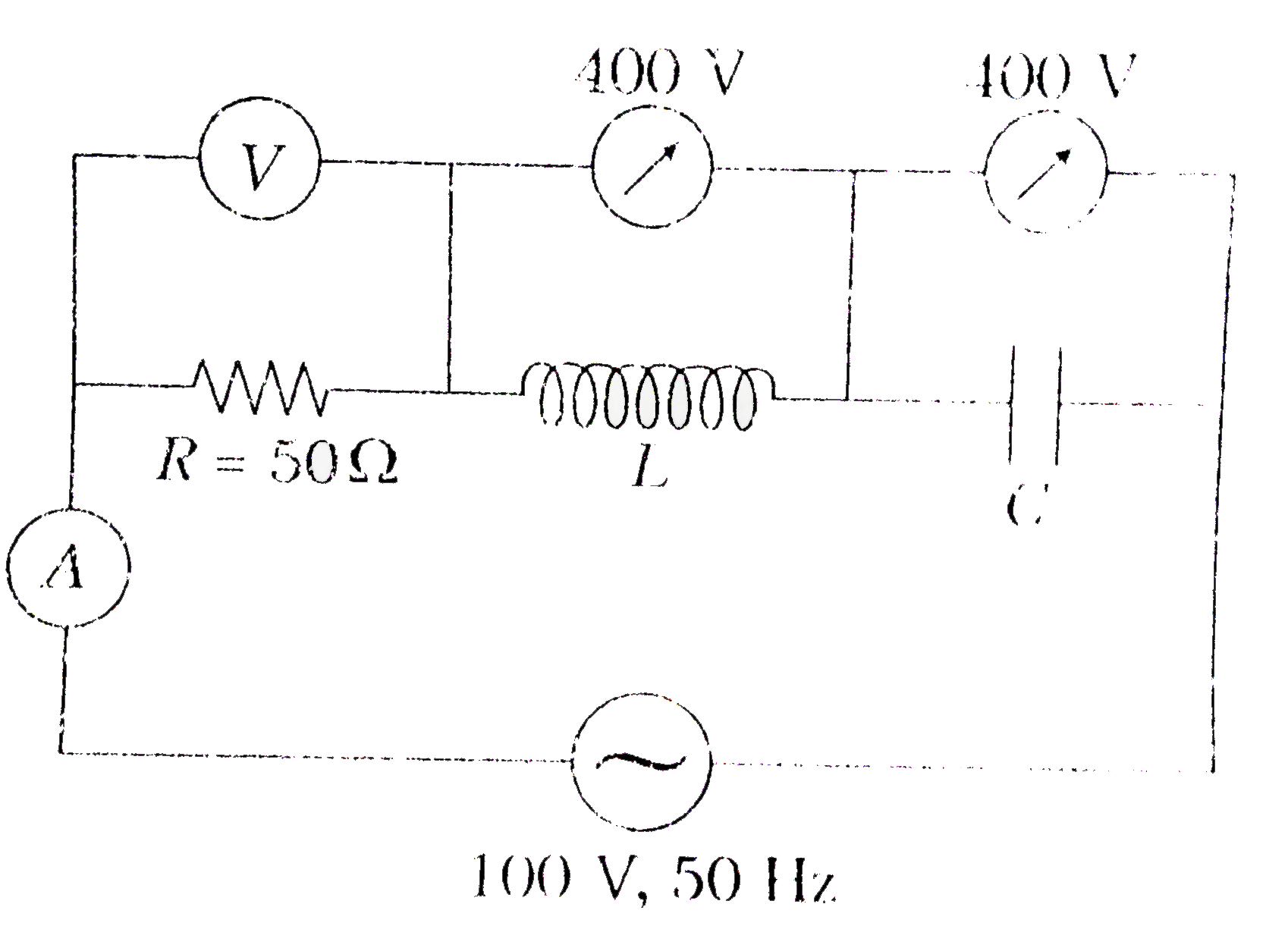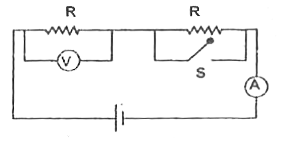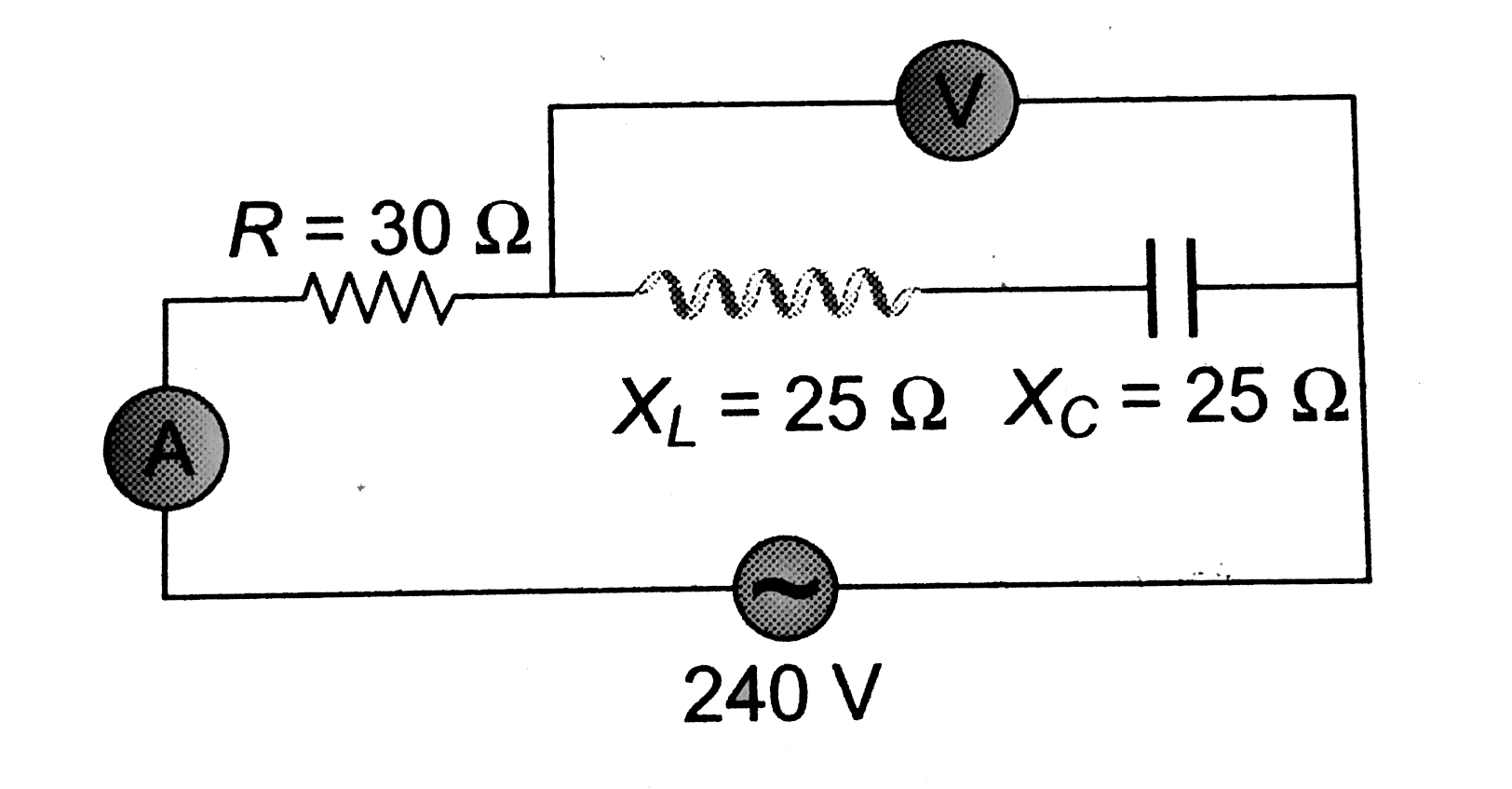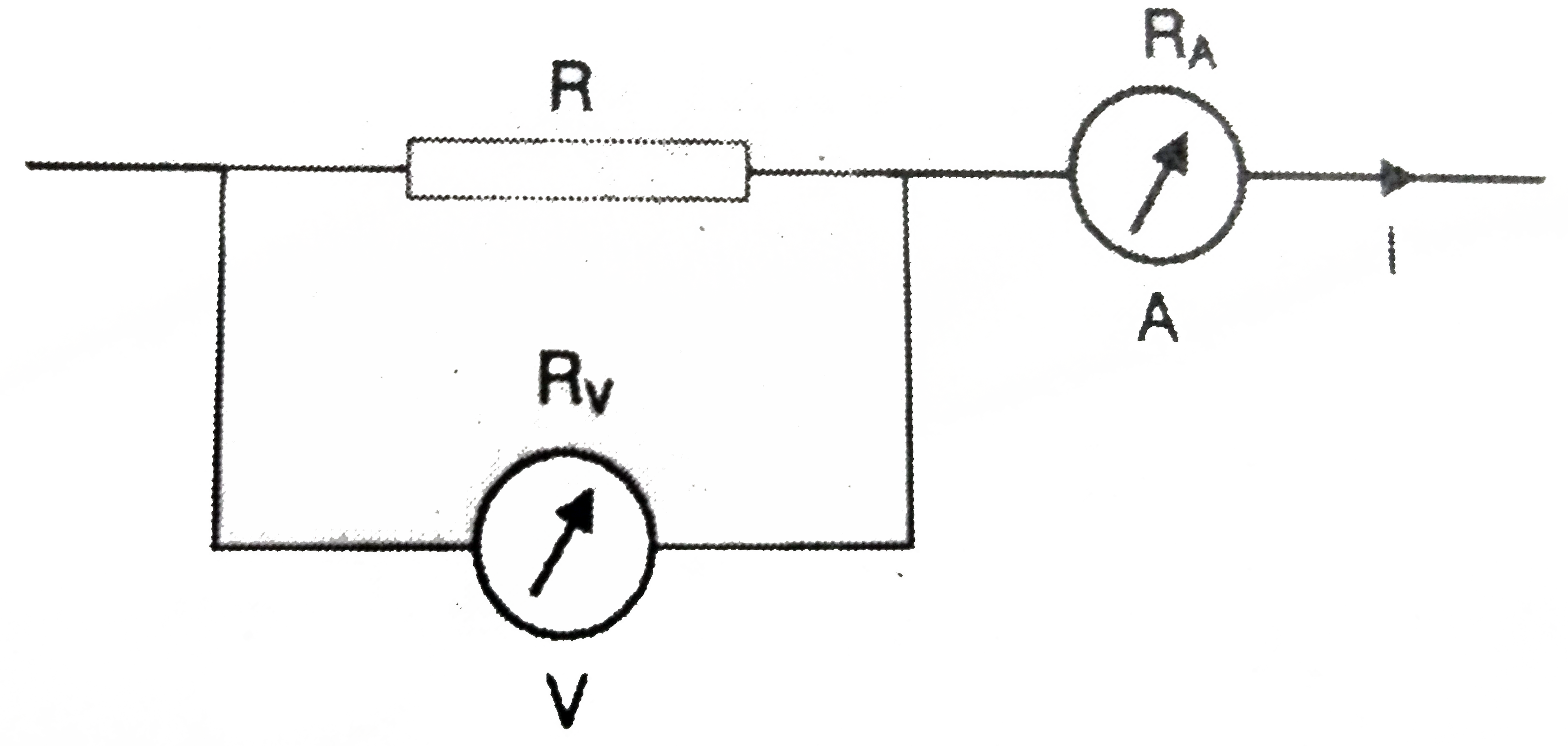In the series L-C-R circuit , the voltmeter and ammeter readings are

The correct Answer is:A
Here , they are in opposite phaes. Hence, they will cancel each other. Now the resultant potential difference is equal to the applied potential difference =100V
.
Topper's Solved these Questions
- ALTERNATING CURRENTBOOK - CENGAGE PHYSICS ENGLISHCHAPTER - ALTERNATING CURRENTEXERCISE - Exercises Multiple Correct
5 Videos
- ALTERNATING CURRENTBOOK - CENGAGE PHYSICS ENGLISHCHAPTER - ALTERNATING CURRENTEXERCISE - Exercises Assertion-reasoning
7 Videos
- ALTERNATING CURRENTBOOK - CENGAGE PHYSICS ENGLISHCHAPTER - ALTERNATING CURRENTEXERCISE - Exercises Subjective
15 Videos
- ATOMIC PHYSICSBOOK - CENGAGE PHYSICS ENGLISHCHAPTER - ATOMIC PHYSICSEXERCISE - ddp.4.3
15 Videos
Similar Questions
In L−C−R series AC circuit,
View SolutionIn the circuit in figure, V is high resistance voltmeter and A is a low resistance ammeter. Switch S is open. What is the effect on the voltmeter and ammeter reading when switch S is now closed? Voltmeter reading and Ammeter reading respectively

View SolutionIn the circuit shown in figure neglecting source resistance, the voltmeter and ammeter reading will respectively be

View SolutionIn the circuit shown in figure neglecting source resistance the voltmeter and ammeter reading will respectively, will be

View SolutionFor a series L C R circuit, the power loss at resonance is
View SolutionFor a series L C R circuit, the power loss at resonance is
View SolutionIn L−C−R series circuit
View SolutionA series L-C-R circuit is operated at resonance . Then
View SolutionWhich statement/statement is/are correct?
1. An ammeter is connected in series in a circuit and a voltmeter is connected in parallel.
2. An ammeter has a high resistance.
3. A voltmeter has a low resistance.
View SolutionLet V and I be the readings of the voltmeter and the ammeter respectively as shown in the figure. Let RV and RA be their corresponding resistancce Therefore,

View Solution
